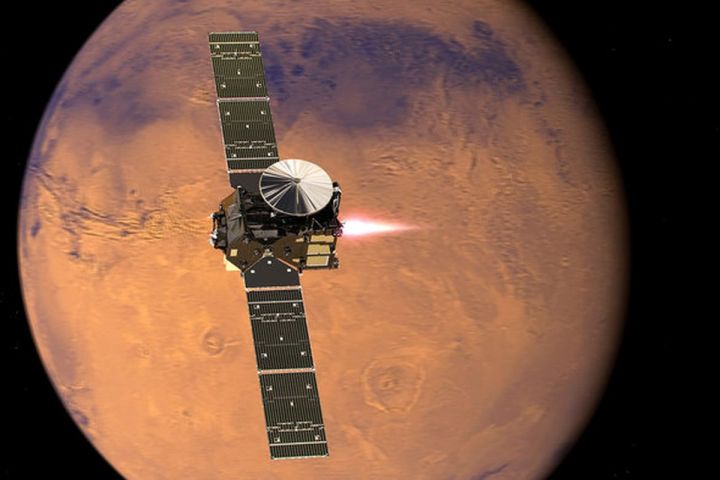
Sophisticated laboratories aboard probes like the Curiosity Rover and the upcoming Insight Mars Lander can tell us much, but samples of Martian soil in terrestrial laboratories would open new worlds of exploration for scientists. To that end, NASA and the European Space Agency (ESA) just revealed a bold plan to retrieve soil samples from the surface of the red planet and transport them back to Earth.
In a statement of intent released last week, the two agencies outlined their proposal, which would require multiple missions and some tricky maneuvering in orbit around Mars.
“There is no question that for a planetary scientist, the chance to bring pristine, carefully chosen samples of the Red Planet back to Earth for examination using the best facilities is a mouth-watering prospect,” said David Parker of the ESA. “Reconstructing the history of Mars and answering questions of its past are only two areas of discovery that will be dramatically advanced by such a mission.”
The Mars 2020 rover, which has already begun assembly at the Jet Propulsion Lab (JPL) in Pasadena, California, will land on Mars via a rocket-powered sky crane. It will collect about 30 soil samples in small test-tube-sized containers and place them in a location for later retrieval.
The next mission will utilize a “fetch rover” to collect the samples and then return to its lander, which will launch the small payload into orbit using a Mars Ascent Vehicle. Such a launch has never been done before, and it will require extensive coordination between the agencies to pull it off.
Finally, a third spacecraft launched from Earth will rendezvous with the Mars Ascent Vehicle and retrieve the samples. Upon returning to Earth, a module containing the samples will enter the atmosphere and land somewhere in the U.S.
All the details of the cooperative venture haven’t been finalized; a more complete proposal will be submitted by the two agencies later this year.
Thomas Zurbuchen of NASA speculated that this mission could finally answer the question about whether there was ever life on Mars. “A sample would provide a critical leap forward in our understanding of Mars’s potential to harbor life,” he said. “I look forward to connecting and collaborating with international and commercial partners on tackling the exciting technological challenges ahead — that would allow us to bring home a sample of Mars.”
Editors' Recommendations
- Watch NASA’s capsule with asteroid samples hurtling to Earth
- Scientists want to farm oxygen from the Martian soil
- Relive NASA’s extraordinary Mars rover landing, one year on
- NASA’s Perseverance Mars rover breaks 17-year-old driving record
- NASA’s InSight put into safe mode during Martian dust storm


